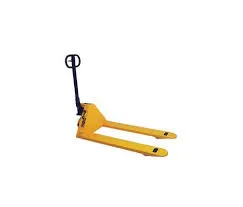


The Chain Pulley Block A Versatile Tool in Material Handling
In industries ranging from construction and shipping to maintenance and repair, the chain pulley block stands out as an indispensable tool for lifting and moving heavy loads. This mechanical device, characterized by its simple yet effective design, utilizes a chain and pulley system to lift objects with greater force and efficiency. This article delves into the components, functionalities, applications, advantages, and safety considerations associated with chain pulley blocks.
Components of a Chain Pulley Block
A chain pulley block consists of several key components that work in unison to facilitate lifting. The primary elements include
1. Pulley System This features several wheels (or pulleys) where the lifting chain runs. The arrangement of these wheels can vary based on the load capacity needed for the work at hand.
2. Chain The chain is the heart of the pulley block, allowing operators to manipulate heavy loads easily. It is often made of high-strength materials to withstand significant tension without breaking.
3. Hook Attached to the lifting chain, the hook is where the load is secured. Many chain pulley blocks come with safety latches to prevent accidental disengagement of the load.
4. Brake Mechanism Essential for safety, the brake mechanism helps to control the descent of the load, allowing for incremental lowering as needed.
5. Frame The frame houses the entire mechanism and provides stability and support. It is designed to remain robust under varied working conditions.
How Chain Pulley Blocks Work
The operation of a chain pulley block is relatively straightforward. When the chain is pulled, it moves through the pulley system, which multiplies the force applied. This mechanical advantage allows a user to lift a significantly heavier object than could be lifted by hand alone. The number of pulleys employed determines the level of force multiplication; more pulleys mean less force is required to lift the same weight.
For instance, if a block has two pulleys in a configuration that halves the force required, an operator pulling down with a force of 50 kg could potentially lift a load weighing up to 100 kg. This system not only optimizes lifting but also reduces operator fatigue, contributing to more efficient workflows.
Applications of Chain Pulley Blocks
Chain pulley blocks find extensive use across various sectors
. Some common applications include
- Construction They are widely used for hoisting structural components, materials like steel beams, and heavy machinery on construction sites. - Warehousing Chain pulley blocks facilitate the lifting and stacking of heavy goods within warehouses, improving space management.
- Maritime In shipping, they are crucial for loading and unloading heavy containers and cargo.
- Automotive Mechanics often use them for lifting engines and other heavy parts during repairs.
- Entertainment In stage productions, these devices assist in the lifting of lighting rigs and stage sets, ensuring safe and precise movements.
Advantages of Chain Pulley Blocks
The appeal of chain pulley blocks lies in their numerous advantages
- Efficiency Significantly reduces the physical effort required to lift heavy loads.
- Versatility Applicable in various industries and suitable for diverse lifting tasks.
- Cost-Effective Compared to electric hoists, chain pulley blocks offer a more affordable lifting solution without sacrificing capability.
- Portability Many models are lightweight and easy to transport, making them useful for both stationary and mobile applications.
Safety Considerations
Despite their advantages, the use of chain pulley blocks comes with safety considerations. Users must ensure proper load limits are adhered to, as exceeding the rated capacity can lead to mechanical failure. Regular maintenance checks on the condition of the chain, pulleys, and brakes are essential to ensure safe operation. Additionally, operators should receive proper training on the device's use to mitigate injury risks.
Conclusion
Chain pulley blocks remain a vital asset in material handling. Their design, combining simplicity with efficiency, makes them ideal for lifting heavy loads across a myriad of applications. By understanding their components, workings, and safety protocols, users can leverage these tools to enhance productivity and ensure a safe working environment. As technology advances, the chain pulley block may continue to evolve, but its core functionality will undoubtedly remain relevant in the world of heavy lifting.



